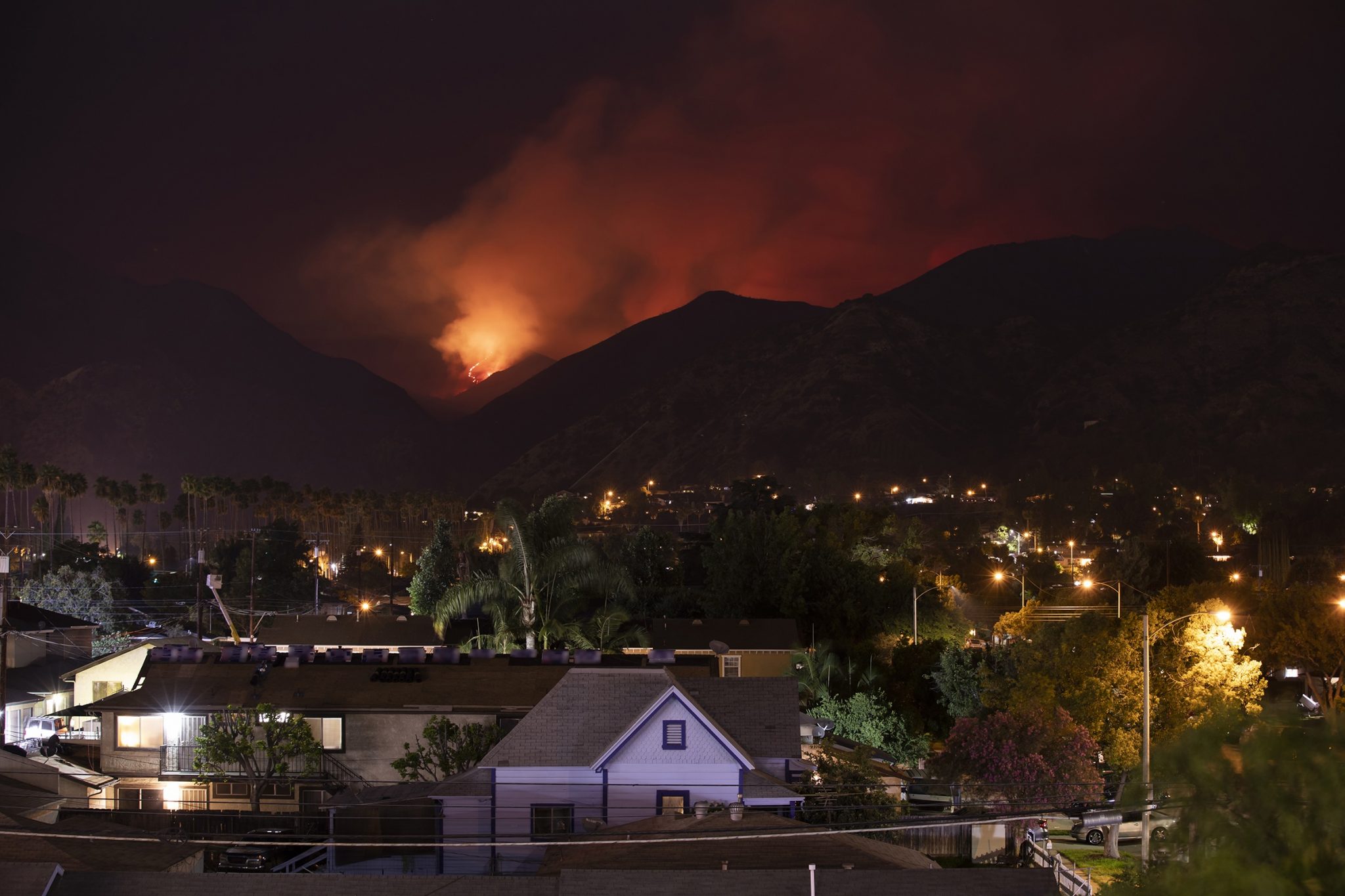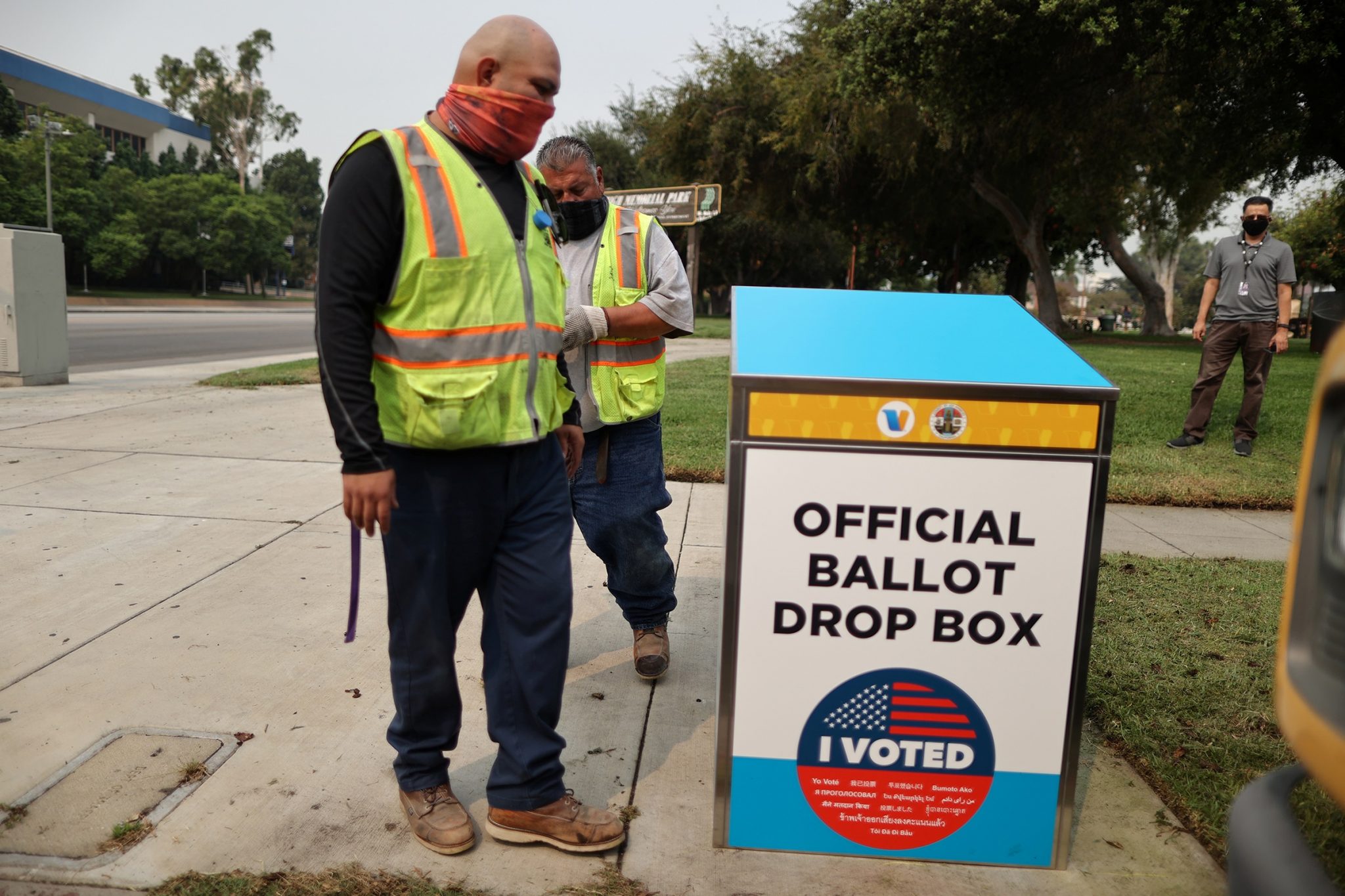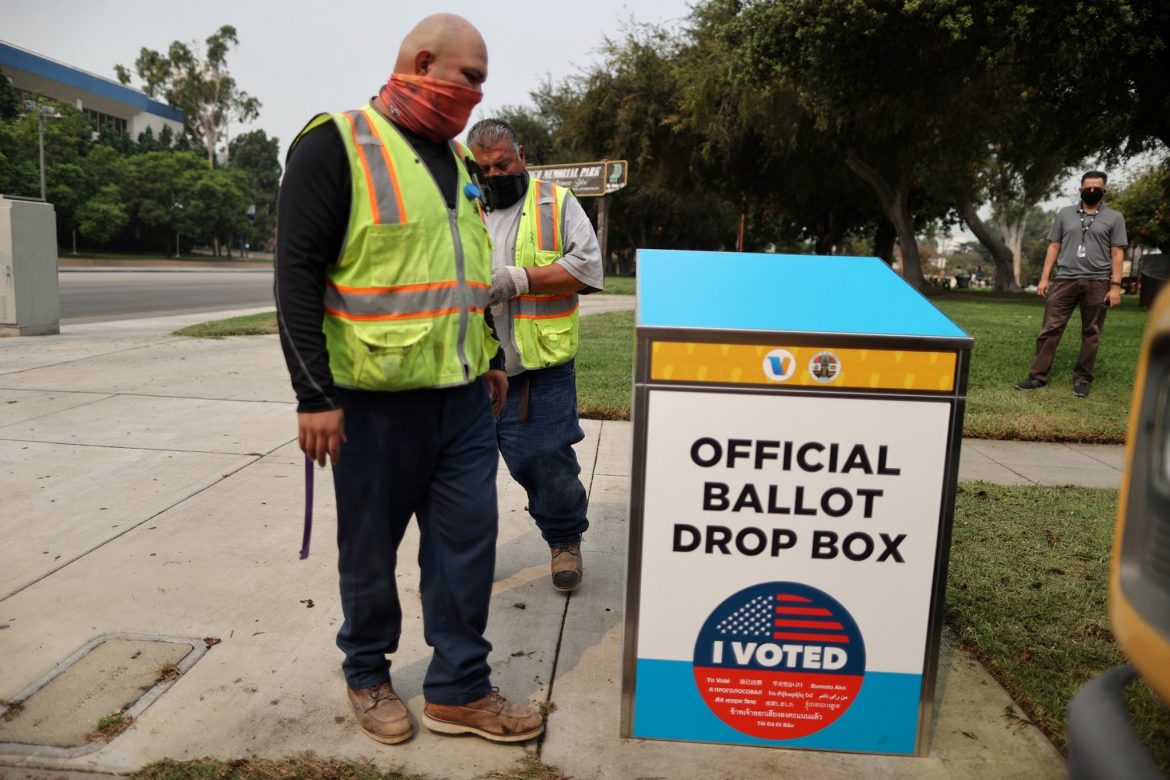The Democrats at the top of the ticket are expecting a safe win in the Golden State—but much tighter races for California are happening further down the ballot.
A safe bet for the upcoming election? That the Biden/Harris ticket will win the state of California and walk away with its bonanza of 55 electoral votes.
After almost exclusively rewarding GOP presidential candidates from the early 1950s to the late ’80s, California’s political winds shifted in 1992 and the state became one of the most reliable pickups in the country for Democrats. That’s roughly the same time that the Golden State sent two long-serving Democratic senators, Dianne Feinstein and Barbara Boxer, to Washington, D.C. (Feinstein is still there; Boxer was succeeded in 2017 by current Democratic vice presidential candidate Kamala Harris.) Democrats currently hold the governorship as well as veto-proof majorities in both houses of the state legislature—which they’ve controlled for half a century, save for two years in the 1990s.
Even so, politics in California can be volatile. Californians love to put issues to a vote in the form of ballot initiatives and propositions—which are fought over intensely, with competing interests spending hundreds of millions of dollars on them every election cycle. In the upcoming election alone, there are a dozen statewide ballot measures asking voters to decide on issues ranging from affirmative action to commercial property taxes to voting age requirements. In addition, dozens of local measures are on ballots across the state, making for a lot of boxes to check.
In response to the COVID-19 pandemic, Governor Gavin Newsom ordered mail-in ballots for the 2020 election to be sent to all registered voters in California to minimize long lines on election day and make voting as safe as possible. Though it’s likely we’ll know which presidential ticket won California by the evening of November 3, the outcome of other races and initiatives may take a while: The state will be counting ballots for weeks afterward. Patience will be key—this is democracy at work!
Registering to Vote
- October 19 is the last day that Californians can register to vote online and also the date by which any mailed-in registration forms must be postmarked. If you prefer a paper application, you can pick one up at your local County Elections Office, public library, Department of Motor Vehicles office, or post office. You can also request that one be mailed to you by calling 800-345-VOTE.
- If you miss the October 19 deadline, you can still register to vote and cast a provisional ballot in person at your County Elections Office at any time up to and including Election Day. Same-day registration is also available in some county elections satellite offices and vote centers.
Voting by Mail
- All registered voters in California will be sent vote-by-mail ballots for the 2020 election. (Note: The state makes no distinction between absentee and mail-in ballots.) Ballots will be mailed to voters by October 5. Mail-in ballots sent in by voters must be postmarked by Election Day, November 3. As long as they are postmarked by Election Day, all mail-in ballots received by November 20 will be counted.
- Follow the directions on the ballot carefully, sign it with your usual signature, and use the official return envelope Avoid these common mistakes to make sure your vote gets counted. Specific information about California’s 2020 ballots can be found here.
- If you lose your mail-in ballot or make a mistake in filling it out, you can contact your County Elections Office to request that a second one be sent to you.
- Once you’ve completed your mail-in ballot and mailed it back, you can track it here.
Early In-Person Voting
- You may submit your mail-in ballot in person to your County Elections Office or any polling place in your county before 8 p.m. on November 3.
- One or more early-voting locations will be available in all counties for at least four days beginning October 31, the Saturday before Election Day. Voting locations will offer voter registration, replacement ballots, accessible voting machines, and language assistance. Some counties may also allow voters to drop off ballots in secure drop boxes. More information on early voting can be found here.
Voting on Election Day
- Polls are open on November 3 from 7 a.m. to 8 p.m. Any voter who is in line by 8 p.m. can still vote. This is your right.
- The location of your polling place is printed on the back page of the county voter information guide your county elections official mailed to you. You can also find your polling place here, or by texting vote to GOVOTE (468683).
- Information on becoming a poll worker can be found here.
U.S. Congress
U.S. senators: Dianne Feinstein (Democrat) and Kamala Harris (Democrat)
Is either senator up for re-election in 2020? No.
Current delegation to U.S. House of Representatives: 53 (45 Democrats, 7 Republicans, 1 vacancy)
Seats up for election this November: 53
U.S. congressional candidates the NRDC Action Fund strongly supports:
- Gil Cisneros for the 39th Congressional District
- T. J. Cox for the 21st Congressional District
- Mike Levin for the 49th Congressional District
- Katie Porter for the 45th Congressional District
- Harley Rouda for the 48th Congressional District
- Christy Smith for 25th Congressional District
California State Government
Governor: Gavin Newsom (Democrat, elected in 2019)
Is Newsom up for re-election? No
Current makeup of California State Assembly: 80 (61 Democrats, 18 Republicans, 1 Independent)
Seats up for election in 2020: 80
Current makeup of California State Senate: 40 (29 Democrats, 11 Republicans)
Seats up for election in 2020: 20

Social Justice and The Environment on the Ballot
Environmental issues loom large in the consciousness of most Californians. This is a state that languished for decades in a miasma of choking smog, only to turn things around in the 1960s by instituting the first tailpipe emissions standards in the country and becoming the nation’s undisputed leader in promoting clean transportation. It’s the state that responded to the horror of a massive 1969 oil spill off its coastline with a positive energy that helped spark the modern environmental movement as we know it. As power plant pollution and climate change affect lower-income communities and communities of color more forcefully than other populations, California has vowed to get 100 percent of its electricity from carbon-free sources by 2045, with at least 60 percent of it coming from renewables by 2030. Most recently, Governor Newsom pledged that all new cars and trucks sold in California achieve zero emissions by 2035 and 2045, respectively.
This year’s devastating wildfire season—the most destructive in the state’s history—is just the latest in a 10-year stretch of wildfire seasons that have shattered all previous records. Californians don’t just think, talk, and worry about climate change: They live in it, year after year.
As a result, the environment looms large in California politics too. This year, in addition to the choice between Trump, a presidential candidate who has called climate change a hoax, and Biden, a presidential candidate who promises to spend $2 trillion fighting it, decisions made on California ballots will also affect other environmental and justice issues, including racial equity, public funding of projects and services, and even the act of voting itself.
Vote “Yes” on These Ballot Measures
Proposition 15: This would close commercial property tax loopholes in order to get businesses to pay their fair share, raising an estimated $12 billion for cities and counties, K–12 education, and community colleges.
Proposition 16: This would restore race, gender, ethnicity, and national origin as considerations in the admissions, hiring, and contracting decisions of public entities.
Proposition 18: This would amend California’s constitution to allow 17-year-olds who turn 18 before general elections to vote in earlier primary and special elections—giving young people a greater say in choosing leaders who will protect their futures and champion bold environmental policies.
Vote “No” on This Ballot Measure
Proposition 22: This would define app-based drivers and other gig-economy workers as independent contractors, denying them basic workplace protections like paid sick leave, minimum wage, and overtime pay. Uber and Lyft have vowed to spend $110 million to pass the proposition. If it passes, it would unfairly place the burden of shifting California’s fleet toward electric vehicles—a must, if the state is to meet its current emissions goals—onto lower-income workers instead of the wealthy companies for whom they work (namely, Uber and Lyft).
The future of California—and the country—is in your hands. Find the way to vote that works best for you, and then DO IT!
Take Action:
- Tell Governor Newsom to sign critical bills into law immediately
- Pledge to vote by mail and vote early
- Sign up for Biden Climate Voters!


